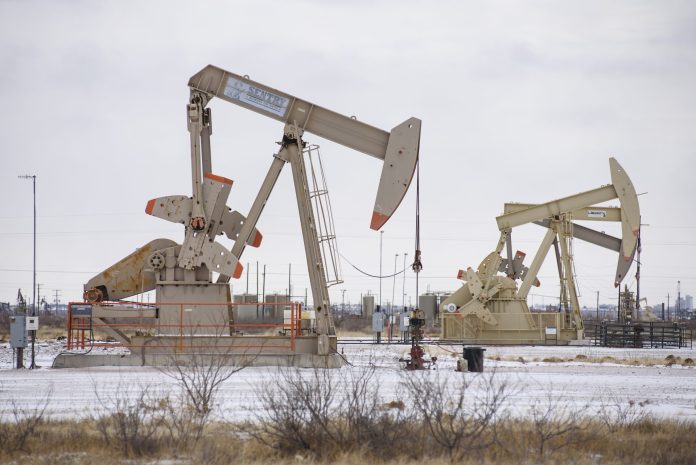
Having learned a bitter lesson from the brutal Winter Storm Uri in February 2021, Texas’ energy industry is battening down the hatches for the stresses that another big blizzard raging down from the north could inflict.
That’s according to State Rep. Brooks Landgraf and the Texas Oil and & Gas Association, who say other industries and average citizens can adopt some of the same tactics.
“I’m thrilled that the decisive actions taken by the Texas Legislature to reinforce the oil and gas supply chain through the introduction of weatherization requirements have continued to enhance our energy infrastructure’s ability to withstand extreme conditions,” Landgraf said from Austin where he chairs the House Environmental Regulation Committee.
“Moreover the proactive involvement of industry operators adopting weatherization practices ensures the establishment of a secure, reliable supply chain for both oil and natural gas,” the Odessa Republican said. “Our collaborative efforts have forged a more resilient Texas grid and as winter approaches Texans can take comfort in knowing that our state is better prepared than ever.”
TXOGA President Todd Staples from Austin said that oil and gas operators begin preparing for cold weather months in advance with extensive resources in place to monitor and prepare for inclement weather on an ongoing basis and utilize best practices and operational plans in order to maximize product flow.
“Onsite seasonal weatherization techniques include methanol injection, temperature-activated pumps, steamer units, equipment shelters and insulated critical lines and valves,” Staples said. “Additional measures prepare operators to better respond during inclement weather to ensure that assets and personnel are safe and able to respond to critical needs.”
He said those measures are securing shelter or housing and pre-positioning personnel to be closer to and access assets, adjusting employees’ schedules to ensure that planning and preparations are in place, having extra methanol and other supplies on trucks, preparing and draining tanks to increase on-site storage and provide a temporary buffer for necessary third party movement of product, line-packing or storing gas within the pipes of gas transmission or distribution systems to maximize product and pressurization and communicating with third party vendors to prepare for inclement weather contingencies and identify the most critical assets to help maintain power from electric utilities and keep production online.
“Actions taken by the 87th Texas Legislature and the Railroad Commission of Texas to establish critical load designations for the most critical natural gas assets and related systems are new post-Winter Storm Uri changes,” Staples said. “Starting Dec. 1, 2022, operators with facilities that were required to weatherize shared their emergency preparedness plans with the RRC with considerations for how each operator would protect their employees, the environment and their equipment when implementing their plans.”
Staples said the requirements extend to external support operations such as water disposal wells to continue oil and natural gas production.
“Even with these winterization techniques in place production fluctuations are expected during extreme weather conditions,” he said. “Variations in daily natural gas production occur with sudden temperature changes because these are field operations, not controlled factory settings.
“These production challenges are not unique to Texas. They occur in even much colder climates, confirming that some disruptions are unavoidable.”
According to the RRC even on mild weather days daily natural gas production can fluctuate for a variety of reasons.
“Prudent users of natural gas domestically and globally should consider these factors when establishing agreements for product and plan appropriately, contracting for firm storage, supply and transportation to meet their needs during possible production decline periods,” Staples said, adding that power generators with firm contracts for supply, storage, and transmission for the volumes they need during extreme weather prove more reliable and resilient.
“These three items are paramount for generators to ensure costs efficiencies and readily available fuel,” he said. “Demand for affordable, abundant energy both here at home and abroad is only expected to grow and a reliable electricity grid is essential to the oil and natural gas industry.”
The TXOGA leader said Texas is more fortunate than most states with its vast natural gas storage infrastructure being funded by the private sector.
“Over the past year Texas’ natural gas marketed production has averaged over 31 billion cubic feet per day and gas used for electricity generation has remained around five bcf/d,” he said. “We have 860 bcf of underground natural gas storage capacity or enough to power five bcf/d of power generation for 164 days or all of Texas’ average natural gas consumption for 64 days.
“Texas produces more than enough natural gas every day to meet our needs here at home, but this industry cannot operate without electricity. The Texas oil and natural gas industry is doing its part to ensure that no matter the weather we are winter ready and we urge all Texans and Texas industries to be prepared as well.”


